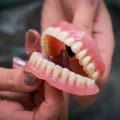If you’re trying to get pregnant, then the holy grail for you is predicting ovulation. A surprisingly large number of fertility problems simply go away when you can tell with accuracy when your body is actually fertile, which it only is in the time around ovulation.
Ovulation is the keystone of your menstrual cycle, when a mature egg is released from the ovaries after (in some cases) more than weeks of maturation, with up to 19 other potential eggs not making the cut. After ovulation, that egg remains viable in the fallopian tubes and uterus for up to 24 hours. If it doesn’t encounter fertile sperm in that time, then you can’t get pregnant in that cycle.

Sperm are themselves viable for four to five days in a woman’s body after ejaculation, so you need to ensure you’re trying to conceive in the week before ovulation to give yourself the best chance to succeed. Predicting when that’s going to happen lets you plan so you don’t miss the opportunity, and gives you a better chance of getting pregnant when you want to.
There are two primary methods used to predict ovulation. The first is using Ovulation Predictor Kits, known for short as OPKs. These work like pregnancy tests, and are available from chemists and most supermarkets. They test your urine for the levels of the hormones that drive ovulation, most notably the Lutenising Hormone (LH) that cues your body to mature and then release an egg from the ovaries.
It’s quick and convenient, but if your body experiences any kind of hormone disruption, it can mask the LH the test needs to work, and cause it to give either a false positive or a false negative. It’s a cruel irony because if you have a hormone issue like PCOS, you likely ovulate less frequently making it even more important to find the times when you do!
A better measure is to track your Basal Body Temperature. This is the low core temperature your body drops to in rest. When you start to get ready for sleep, your core temperature drops, and if you can measure your temperature at this low level, you can spot minute variations across the length of your cycle that tell you when you’re due to ovulate.
This used to be a cumbersome, if accurate method to use, as you would have to take your temperature intimately as soon as you woke up – too much movement before taking a reading would distort the results – and then plot the results down to the tenth of a degree to spot the pattern that tells you ovulation is due. In 2019, specialist technology lifts the burden, with specialist sensors that can take your temperature automatically right through the night, and computer algorithms that turn those readings into an accurate prediction for you!































No Comments
Leave a comment Cancel